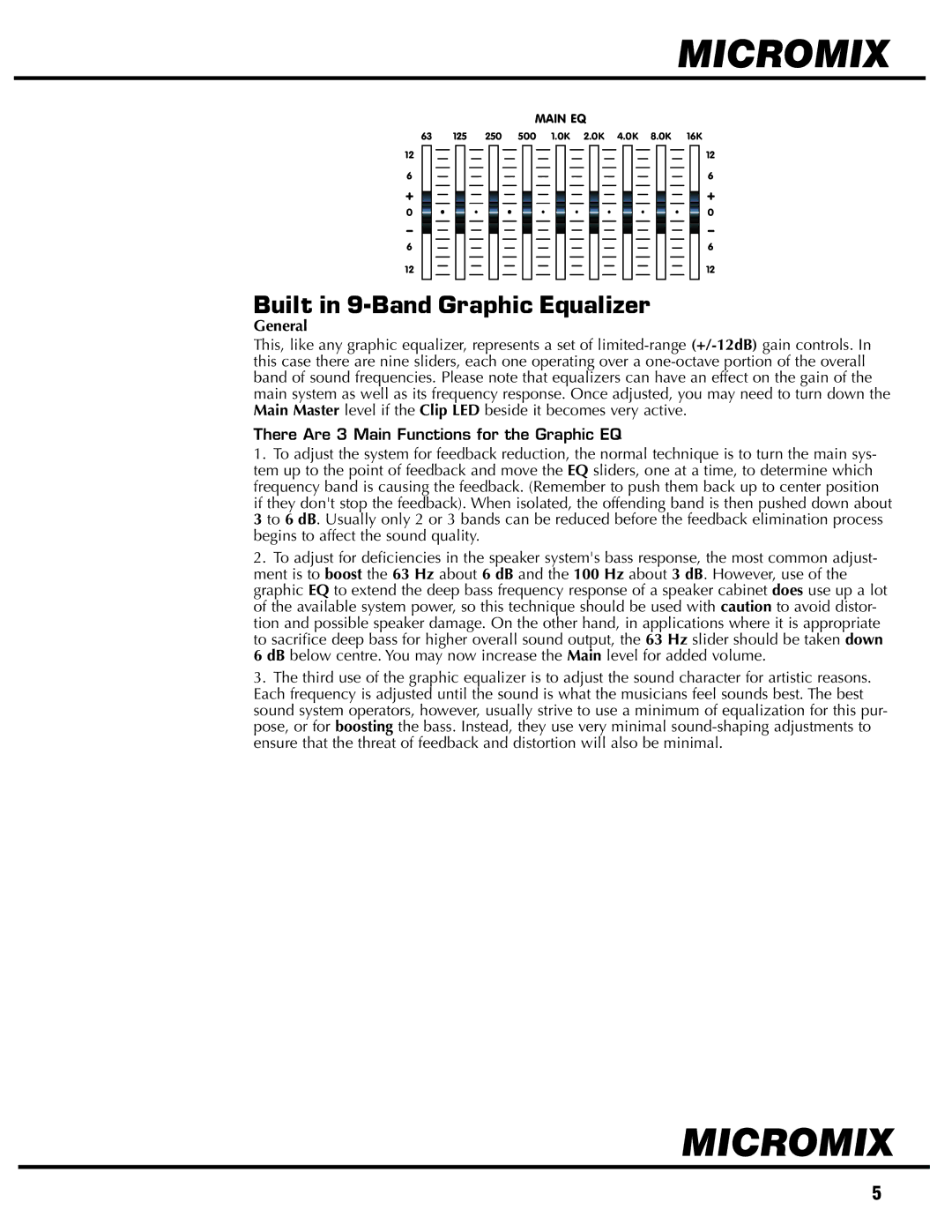
MICROMIX
MAIN EQ
63 125 250 500 1.0K 2.0K 4.0K 8.0K 16K
12
6
0
6
12
12
6
0
6
12
Built in 9-Band Graphic Equalizer
General
This, like any graphic equalizer, represents a set of
There Are 3 Main Functions for the Graphic EQ
1.To adjust the system for feedback reduction, the normal technique is to turn the main sys- tem up to the point of feedback and move the EQ sliders, one at a time, to determine which frequency band is causing the feedback. (Remember to push them back up to center position if they don't stop the feedback). When isolated, the offending band is then pushed down about
3to 6 dB. Usually only 2 or 3 bands can be reduced before the feedback elimination process begins to affect the sound quality.
2.To adjust for deficiencies in the speaker system's bass response, the most common adjust- ment is to boost the 63 Hz about 6 dB and the 100 Hz about 3 dB. However, use of the graphic EQ to extend the deep bass frequency response of a speaker cabinet does use up a lot of the available system power, so this technique should be used with caution to avoid distor- tion and possible speaker damage. On the other hand, in applications where it is appropriate to sacrifice deep bass for higher overall sound output, the 63 Hz slider should be taken down
6dB below centre. You may now increase the Main level for added volume.
3.The third use of the graphic equalizer is to adjust the sound character for artistic reasons. Each frequency is adjusted until the sound is what the musicians feel sounds best. The best sound system operators, however, usually strive to use a minimum of equalization for this pur- pose, or for boosting the bass. Instead, they use very minimal
MICROMIX
5
